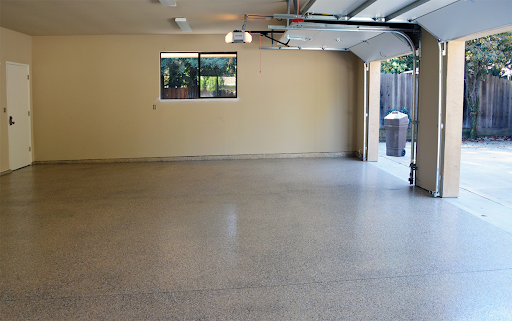The Primary School Leaving Examination (PSLE) is a milestone for every Singaporean student, and the Maths paper often feels like a mountain to climb. Parents pace nervously, students scribble furiously, and teachers drill formulas into young minds. If you’re reading this, chances are you’re looking for a way to make sense of the PSLE Maths exam—its structure, its quirks, and the types of questions that pop up. Don’t worry; I’ve got you covered. Let’s break it down step-by-step, sprinkle in some practical insights, and make this less of a chore and more of a journey.
What’s the PSLE Maths Exam All About?
The PSLE Maths exam isn’t just about numbers—it’s a test of reasoning, problem-solving, and staying cool under pressure. Designed by the Singapore Examinations and Assessment Board (SEAB), it checks how well Primary 6 students can apply mathematical concepts they’ve learned over the years. The goal? To see if they’re ready for secondary school challenges. It’s split into two papers, each with its own flavor, and covers everything from basic arithmetic to tricky word problems.
The exam happens once a year, usually in late September or early October, and it’s a big deal. Your score here doesn’t just reflect your Maths skills—it’s part of the magic formula that decides your secondary school placement. So, let’s dig into the format and figure out what you’re up against.
Exam Format: The Two-Paper Breakdown
The PSLE Maths exam comes in two parts: Paper 1 and Paper 2. Together, they’re worth 100 marks and take about 2 hours and 30 minutes total. Here’s how it shakes out:
- Paper 1: This is the quick-fire round—50 minutes, 45 marks. It’s split into two booklets:
- Booklet A: 15 multiple-choice questions (MCQs), worth 25 marks. You get 1 mark for each of the first 10 questions and 2 marks for the last 5. Pick the right answer, shade the OMR sheet, and move on. Sounds simple, but watch out—some options are sneaky close!
- Booklet B: 15 short-answer questions, worth 20 marks. Each question is 1 or 2 marks. You write your answer in the space provided, and yes, units matter. Forget to write “cm” or “kg,” and you might kiss a mark goodbye.
- Paper 2: This is the marathon—1 hour 40 minutes, 55 marks. It’s got 17 questions, and things get meatier here:
- 5 short-answer questions: 2 marks each, totaling 10 marks. Similar to Paper 1’s Booklet B, but the stakes feel higher.
- 12 structured/long-answer questions: These are the heavy hitters, worth 3, 4, or 5 marks each, adding up to 45 marks. You’ll need to show your working, draw diagrams, or explain your logic. No shortcuts here!
Calculators are allowed in both papers, which is a lifesaver for big numbers, but don’t lean on them too much—mental math still rules the roost.
The Question Types: What to Expect
Now that you know the layout, let’s talk about the beasts you’ll face. The PSLE Maths syllabus spans five key areas: Numbers and Algebra, Measurement, Geometry, Data Analysis, and Problem Solving. Questions weave these together in ways that test both your basics and your brainpower. Here’s the rundown:
- Multiple-Choice Questions (Paper 1, Booklet A)
These are snappy but not always straightforward. You might see something like: “A fruit seller has 240 apples and sells 3/5 of them. How many are left?” Options could be 96, 144, 120, or 150. Quick tip: 240 × 3/5 = 144 sold, so 240 – 144 = 96 left. Easy if you stay sharp, but rush and you’ll trip. - Short-Answer Questions (Paper 1, Booklet B & Paper 2)
These ask for a number or a simple phrase. Think: “A rectangle’s length is 12 cm, and its width is 8 cm. What’s the perimeter?” You jot down 40 cm, and you’re done. Units are key—skip them, and it’s a pointless mistake. - Word Problems (Paper 2)
Here’s where the real fun begins. These questions mix numbers with stories, and they’re the ones that make kids sweat. Example: “Ali has $50. He spends 2/5 of it on a book and half of what’s left on a pen. How much does he have now?” Break it down: 2/5 of 50 is 20, leaving 30. Half of 30 is 15, so he spends 15 more. That leaves 15 bucks. Show your steps, and you’re golden. - Diagram-Based Questions (Paper 2)
You’ll get shapes—triangles, circles, nets of cubes—and need to find areas, angles, or volumes. Like: “A square has a perimeter of 24 cm. What’s its area?” Perimeter 24 means each side is 6 cm, so area is 6 × 6 = 36 cm². Diagrams help, so sketch if you’re stuck. - Pattern and Logic Problems (Paper 2)
These are brain teasers. “A sequence goes 2, 5, 9, 14. What’s the next number?” Spot the pattern: differences are 3, 4, 5, so the next is 6, making it 14 + 6 = 20. They’re tricky but satisfying once you crack them.
Tips to Tackle the Exam
So, how do you conquer this? First, know your tools—practice with that calculator, but don’t ditch mental math. Time yourself on Paper 1 to nail that 50-minute sprint. For Paper 2, read questions twice; word problems love to hide details. Always show your working—examiners give partial marks if your logic’s solid, even if the answer’s off.
Brush up on fractions, ratios, and percentages—they’re everywhere. Geometry needs love too; memorize those angle rules and area formulas. And don’t just solve—understand. Why does this method work? That’s the PSLE secret sauce.
A Parent’s Role
If you’re a parent, resist the urge to hover. Guide, don’t spoon-feed. Grab past-year papers from bookstores or MOE’s website, and let your kid wrestle with them. Mistakes are gold—talk through them. Celebrate small wins, like nailing a tough ratio problem. It’s less about cramming and more about building confidence.
Final Thoughts
The PSLE Maths exam isn’t a monster—it’s a puzzle. With two papers, a mix of question types, and a clear game plan, you can tackle it. Whether it’s picking the right MCQ, scribbling a perimeter, or unraveling a wordy saga, every step gets you closer. So, grab a pencil, a stack of practice sheets, and dive in. You’ve got this—and secondary school’s waiting just beyond the finish line.









